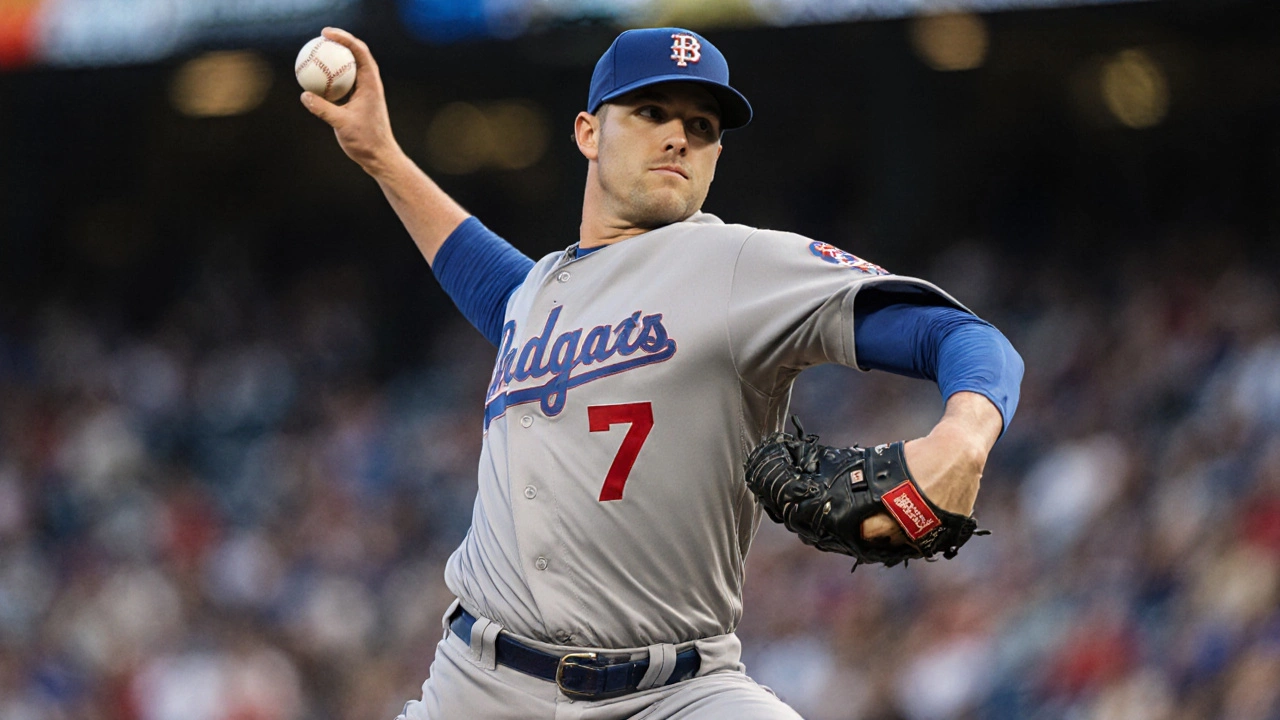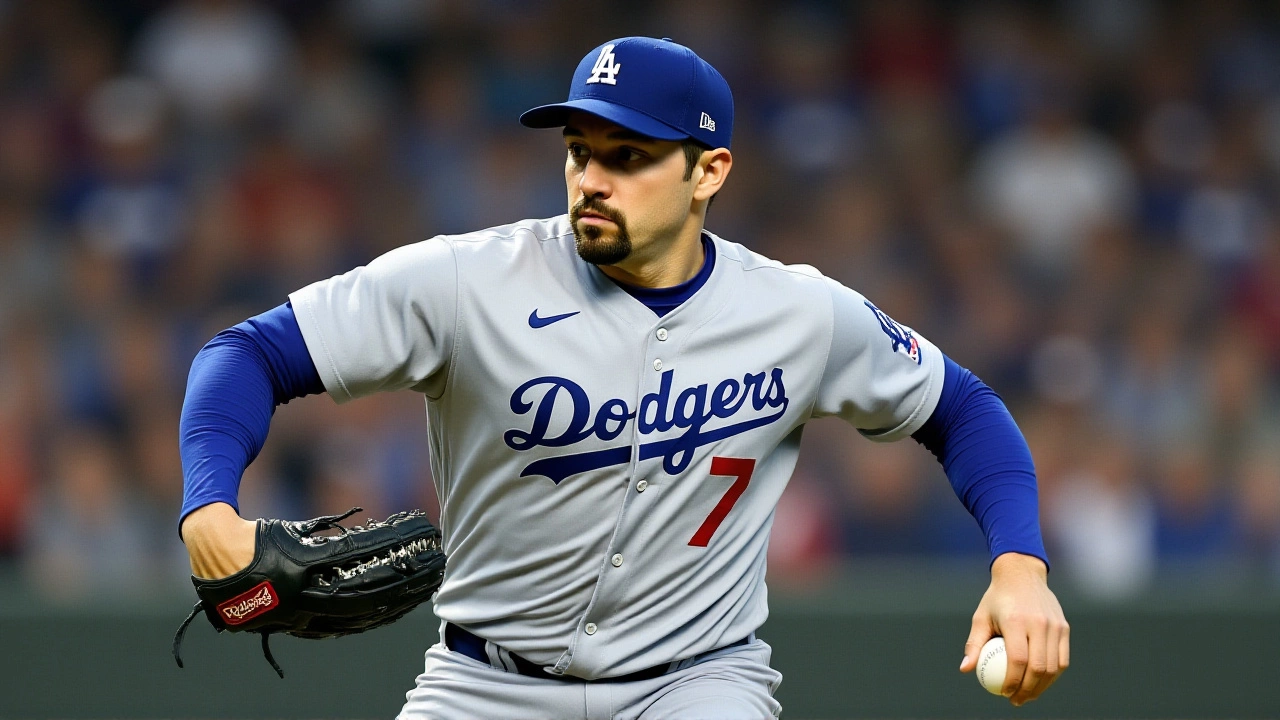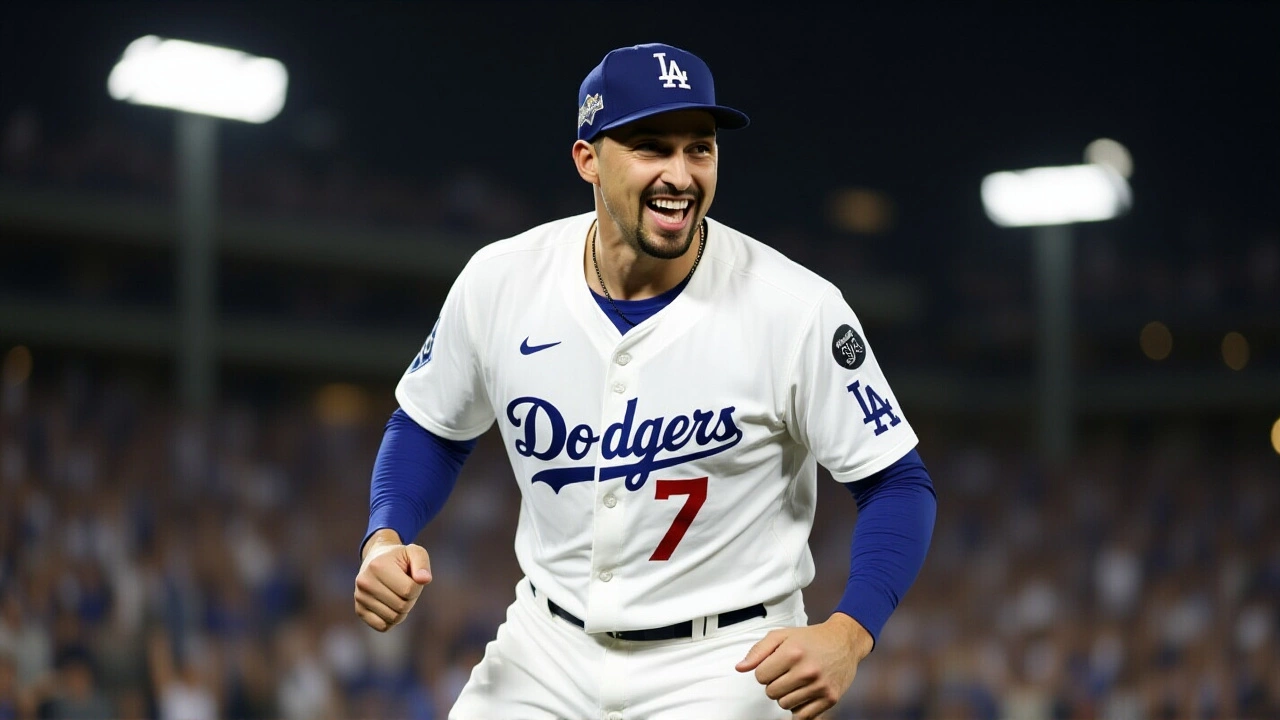When Blake Snell, starting pitcher of the Los Angeles Dodgers stepped onto the mound for Game 1 of the 2025 World SeriesDodger Stadium, the stadium buzzed with a mix of anticipation and relief. After a shoulder injury that landed him on the injured list in mid‑July and a brief hospitalization after the birth of his child, Snell transformed what he called “the hardest year of my career” into a potential championship catalyst.
Road to Recovery
The setback began on July 15, 2025, when the Dodgers placed Snell on the 10‑day injured list due to a lingering shoulder strain. Five days later he was assigned to a rehab stint with the Oklahoma City Comets, the organization’s Triple‑A affiliate. The rehab was a grind: 20‑plus pitches each session, meticulous physio work, and a mental reset. By early September, the Dodgers felt confident enough to bring him back.
Snell’s first start after the rehab came on September 10, 2025 against the Colorado Rockies at Dodger Stadium. He logged six innings, gave up just two hits, no runs, and struck out 11 batters. The next week, he did it again versus the Philadelphia Phillies at Citizens Bank Park, tossing seven scoreless innings with 12 strikeouts. The third pre‑postseason outing was against the Arizona Diamondbacks at Chase Field on September 24, where he allowed a single run over six innings.
Those performances trimmed his regular‑season line to a 5‑4 record, a 2.35 ERA, 72 strikeouts, and a tidy 1.26 WHIP across 61.1 innings. For a guy who’d missed essentially a quarter of the season, those numbers were a lifeline for a club that had flirted with the playoff bubble.
Snell’s Postseason Dominance
Enter the playoffs. The Dodgers’ rotation—Snell, Yoshinobu Yamamoto, Tyler Glasnow, and Shohei Ohtani—posted a collective 1.40 ERA through the first three rounds, a stark improvement from the 2.07 ERA they logged in September.
Snell’s three postseason starts up to the World Series were textbook. Each went at least six innings, each yielded zero earned runs, and he amassed 28 strikeouts total. In the NLDS Game 2, he fanned the heart of the opposing lineup, a performance highlighted by a 95 mph fastball that painted the outside corner. In the NLCS, his slider fluttered against left‑handed hitters, pulling the shortstop off the bag time after time. By the time the Dodgers clinched the NL pennant, Snell’s confidence was radiating on the mound and in the dugout.
“With every great starting staff, you got to have that anchor,” Dave Roberts said after the series‑clinching win. “Having him get back to pitch the way he did, sort of raised the bar for everyone.”
Voices from the Clubhouse
Teammates echoed the sentiment. Freddie Freeman noted, “We started winning because our starting pitching was just so good. When you see your pitcher shutting down the opponent, it takes the pressure off the offense.” Third‑base stalwart Max Muncy added, “We always knew we were a really, really good team in October. Once you get to October, it’s game time.”
Even the veterans chimed in. Hall of Famer Clayton Kershaw told Snell, “Trust the process you built last year. Your stuff is still elite.” And the legendary Sandy Koufax, who still visits the clubhouse, offered a simple nod: “Stay calm, stay aggressive.”
Behind the scenes, Andrew Friedman, the Dodgers’ president of baseball operations, explained the front office’s long‑term view: “When we were talking about ways to put ourselves in the best position to win a World Series in 2025, all conversations kept coming back to Blake.”

What This Means for the World Series
On October 22, 2025, the Dodgers host the Milwaukee Brewers at Dodger Stadium. The matchup pits Snell’s precision against the Brewers’ power‑hitting core, headlined by Christian Kelley and Brandon Woodruff. If history is any guide, a dominant ace can tilt a short series. In the 2020 World Series, for instance, Blake Snell (then with the Rays) secured a Game 1 win that set the tone for the entire club.
Dodgers analysts point to a simple equation: strong rotation = lower bullpen usage = more offensive freedom. With the staff’s collective ERA sitting at 1.40 in the postseason, the Brewers will need to manufacture runs early, lest they fall behind the curve of Snell’s dominance.
The stakes are personal, too. Snell said in a post‑game interview, “It’s what you have to go through to win a World Series. You can find an excuse, or you can find a way to figure it out.” The emotional weight of his newborn son, who was born just weeks before his return, adds a layer of narrative rarely seen in baseball’s cold statistics.
Looking Ahead
If the Dodgers capture the trophy, Snell will join a select group of pitchers who forged a championship after a mid‑season injury—think John Smoltz in 1996 or Madison Bumgarner in 2014. Beyond the personal glory, his success could reshape how teams view late‑season acquisitions and rehab timelines.
For now, fans in Los Angeles are sipping their coffee, eyes glued to the big screen at Dodger Stadium, hoping the narrative of adversity will crescendo into triumph. The next few days will decide whether Snell’s season‑long comeback becomes a chapter in Dodgers lore or a near‑miss that still earns respect.

Key Facts
- Blake Snell posted a 5‑4 record, 2.35 ERA, 72 K’s in 61.1 innings during the regular season.
- Dodgers rotation ERA: 1.40 in the postseason (first three rounds).
- Snell’s three postseason starts: 6+ innings each, 0 ER, 28 strikeouts.
- Injury timeline: IL July 15 → rehab assignment July 20 → returned September 10.
- World Series start: Game 1, October 22, 2025, at Dodger Stadium, Los Angeles.
Frequently Asked Questions
How did Blake Snell’s shoulder injury impact the Dodgers’ season?
The shoulder strain sidelined Snell for roughly two months, forcing the Dodgers to rely on depth pitchers. His absence contributed to a mid‑season slump that left the club hovering around .500. His return in September sparked a 7‑3 finish, directly influencing their playoff berth.
What makes Snell’s performance in the postseason stand out?
He delivered three starts of six-plus innings without surrendering an earned run, striking out 28 batters. That consistency lowered the Dodgers’ overall ERA to 1.40, the best in MLB, and gave the bullpen ample rest, a rare feat in a short series.
Which Dodgers players credit Snell for the team’s late‑season surge?
First baseman Freddie Freeman and third‑baseman Max Muncy publicly attributed the turnaround to the rotation’s dominance, highlighting Snell’s ability to shut down opponents and lighten the offensive pressure.
What are the odds the Dodgers win the 2025 World Series with Snell starting?
Analysts rate the Dodgers as slight favorites, citing their 1.40 postseason ERA and balanced lineup. Snell’s Game 1 start is pivotal; if he repeats his scoreless streak, the Brewers will need to overcome a significant early deficit.
How might Snell’s comeback influence future pitcher rehab strategies?
Teams may view mid‑season injuries as opportunities for structured rehab assignments, similar to Snell’s stint with the Oklahoma City Comets. His rapid return suggests that targeted, data‑driven recovery programs can restore elite performance without sacrificing playoff timing.
